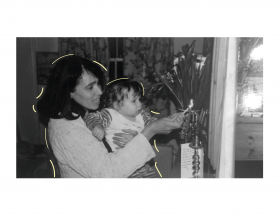A sense of impending disaster has infiltrated our media, our market, our minds. A nagging feeling of the imminent end of the world as we know it consistently confronts us. And in many ways, this feeling isn’t so far removed from reality. The latest special report on the impacts of global warming was published by the International Panel on Climate Change (IPCC) this October, reiterating the intensification of climate-related risks to livelihoods, health, food security, human security, water supply, and economic growth. Included in the report are appraisals and warnings of sea level rise, ocean acidification, species loss and extinction, decline of coral reefs, creation of new hazards, continued emissions, extreme temperatures, droughts, and precipitation, thawing permafrost, the need for large-scale and rapid transitions of land, urban, energy, infrastructure, and industrial systems, the globally uneven distribution of adverse impacts, and the vulnerability of human and natural systems. It is not difficult to understand how a feeling of doom has permeated our culture when it is faced with these existential threats. What is difficult to understand is why we, as a global community, fail to look ahead, take action, and change in response.
One way to explain it is through the circulation of a dominant disempowering and negative narrative. Andreas Malm, author of Fossil Capital, has argued that in this era of climate chaos we are confronted with a crisis in crisis. This is to say that the all-consuming talk of crisis does the exact opposite of what it should, paralyzing individuals instead of creating widespread structural changes. In this sense, the storyline being circulated is trapping us in an immobilized state of being. A worrying state to find yourself in considering the scale and complexity of challenges confronting humanity today.
Tim Houman, of Roskilde University, notes that narratives can have a very strong grip, especially when they provide the temptation of accepting an oversimplified version of reality and the possibility of advancing a particular agenda. In conversation with Charles Eisenstein in a podcast episode of “Under the Skin” published in October of 2018, Russell Brand questions why “the powerful” favor the dominant and reductive climate change narrative. The answer Eisenstein provides is both disheartening and unsurprising – money. He argues the dominant narrative lends itself to lucrative quantitative solutions and mind frames, leaving out variables that are not quantifiable and reducing the living complexity of Earth to numbers. Attempting to change this narrative and fighting to create a more empowering story is challenging, especially when there are powerful forces benefitting from our inaction and feelings of helplessness. However, it is not only possible to rewrite the narrative; it is absolutely necessary.
The time has come to disentangle ourselves from the doom and gloom storyline that has slowly spread to every corner of our consciousness. Even when faced with overwhelming negativity and wicked problems, being trapped in a semi-comfortable state of inaction, complacency, and ignorance is still a choice. At the end of the day, humankind has collectively chosen the destructive path they tread upon, and like it or not – the consequences must be dealt with. To address the consequences of climate change and preserve life as we know it, a more revolutionary, disruptive, and optimistic narrative is imperative. Because the stories we tell ourselves are powerful.
William S. Becker has argued that the conversation must shift to the recognition that climate change can be controlled. He states, “the only thing that will keep us from building a new energy economy and doing it in time is the belief that we can’t.” This sentiment paints a more motivating picture of the future, one that we have control over. Becker argues in favor of a new logic model seizing climate change as an opportunity and focusing on measures we can practically achieve and actually afford. In keeping with the spirit of activism outlined in Srdja Popovic’s Blueprint for Revolution, it is time to stop being scared and start getting organized. By building a sense of community, group identity, and cohesion, by making use of hope as a tool to crush fear, so many more individuals can be engaged in the fight for social change.
Yes, decades have passed and the international community has failed to come to an enforceable agreement to confront global warming. Yes, ocean and land ecosystems have already changed in response to climate change and will continue to do so at rapid rates. Yes, most corporations and governments have yet to take nearly enough responsibility in shaping a more sustainable world. Yes, sea levels are rising and cutting all emissions today would still not change that fact. No, all is not lost. Though it is extraordinarily easy to be deceived into thinking that it is.
In an article for BBC News, Roger Harrabin refers to the notion that humans have now arrived at the “final call” to mitigate the worst effects of climate change. Meaning there is still time left to avoid worst-case scenarios, now being high time to snap into action. He also notes that the young people of today will be the ones to “pick up the bill” of climate change. In a lawsuit against the US federal government that began this October, 21 children and young people are suing for the violation of their constitutional rights because of the government’s inaction and failure to safeguard their futures despite the knowledge that carbon and other forms of pollution are poisoning the planet. This is just one example of young people taking charge in the fight for a sustainable world. Most politicians running our systems today will not be alive to see the worst effects of climate change sweeping the globe. Unfair or not, it is up to the younger generation to show up and stand up for their futures. David Remnick, editor of The New Yorker, has pointed out the wide gap between what needs to be done and what is being done regarding climate change mitigation: the typical response being a conversation about laws yet to be passed, technologies yet to be developed, and steps yet to be taken. A conversation that has not proved very conducive to change. Recasting the conversation and rediscovering the power each individual wields in the creation of our collective destiny could forge a profoundly different vision of the future. In his book, Popovic reminds readers that there is no bigger, braver, or better person ready to ride to the rescue and solve our problems for us. Which begs the question: if we don’t take charge of the narrative, if we don’t use hope to counteract fear, if we don’t rise up to solve the colossal problems humanity faces today, if we don’t fight for change – who will?




